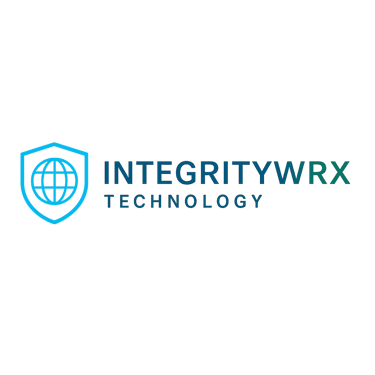Enhancing Data Integrity and Security with Blockchain Logging: Embracing Zero Trust in the Web3 Era
BLOCKCHAIN
Terynn Hill
8/7/20254 min read


Understanding Blockchain Logging
Blockchain logging represents a transformative method of recording data through a decentralized ledger system. At its core, this technology documents transactions or records in blocks that are cryptographically linked to ensure the authenticity and immutability of data. Each block contains a timestamp, transaction data, and a reference to the previous block, creating a secure and auditable chain. One of the core advantages of blockchain logging lies in its consensus-based validation. Rather than relying on a single authority to verify data, blockchain networks utilize consensus mechanisms like Proof of Work or Proof of Stake to ensure data integrity. This approach distributes verification across the network, minimizing the risk of manipulation or unauthorized changes. In this model, no single entity controls the data, making it highly resistant to tampering.
Unlike traditional centralized logging systems—which are prone to single points of failure—blockchain introduces redundancy by distributing copies of the ledger across all participating nodes. This architecture not only enhances system resilience but also ensures that any attempt to alter records is instantly detectable across the network.Blockchain logging also introduces a new level of transparency. Every data transaction is timestamped and traceable, enabling more robust auditing capabilities. This is particularly relevant for industries bound by strict compliance mandates, such as healthcare and finance, where secure and immutable data trails are essential.According to the National Institute of Standards and Technology (NIST), blockchain systems are considered "tamper-resistant due to cryptographic verification and distributed consensus" (NIST, 2020). This property makes blockchain a strong candidate for secure logging implementations in zero trust architectures.
The Importance of Data Integrity and Compliance
Data integrity is critical to maintaining the reliability and trustworthiness of business operations. It refers to the assurance that data is accurate, consistent, and safeguarded from unauthorized changes throughout its lifecycle. Breaches in data integrity can lead to legal liabilities, loss of customer trust, and operational disruption. Compliance with regulations like HIPAA, GDPR, and FISMA demands strict oversight over how data is stored, transmitted, and accessed. These regulations emphasize the importance of auditability and accountability—qualities that blockchain logging inherently supports through immutable record-keeping and transparency. Government guidance, such as the Zero Trust Maturity Model by CISA (2023), underscores the need for robust, verifiable logs as part of a modern cybersecurity strategy. Blockchain’s cryptographic and decentralized nature makes it a suitable technology for meeting these evolving security and compliance requirements.
Safety and Security in the Digital Age
Cybersecurity threats have increased in frequency and complexity, making traditional security models insufficient for protecting sensitive information. Blockchain logging addresses these challenges by providing a transparent and tamper-proof method for recording security events. In a zero trust environment, where no user or device is automatically trusted, blockchain enhances security by offering a verifiable trail of access logs and transaction history. For example, integrating blockchain into access management systems can ensure that every user action is recorded immutably and verified independently by the network. Peer-reviewed research published in the IEEE Communications Surveys & Tutorials supports this claim, stating that "blockchain-based logging systems can significantly enhance traceability, accountability, and resistance to tampering" (Puleo & Lin, 2020).
Transitioning to a Zero Trust Framework
The adoption of a zero trust framework reflects the reality that threats can come from inside or outside an organization. Unlike perimeter-based security models, zero trust requires continuous authentication, authorization, and validation of all access requests. Blockchain logging aligns with zero trust by offering a decentralized audit trail that cannot be altered without consensus. This synergy allows organizations to implement more stringent controls, continuously monitor user behavior, and rapidly respond to anomalies. Blockchain adds an additional layer of assurance, ensuring that every access attempt and transaction is logged transparently.
Strategies for Implementing Blockchain Logging
Implementing blockchain logging begins with a clear understanding of the organization's data management and security goals. Stakeholders must assess which systems will benefit from immutable logging and identify the required level of transparency and resilience. Technology selection should focus on platforms that support scalability, integration with existing systems, and strong cryptographic guarantees. Governance is equally crucial—organizations must define policies for access control, data retention, and audit procedures. Training staff is essential to successful adoption. Without proper education and alignment, the implementation may face resistance or security missteps. Change management programs should emphasize the benefits of blockchain in enhancing data integrity and organizational accountability.
Preparing for the Web3 Transition
Web3 introduces a shift toward decentralization, data ownership, and user sovereignty. In this evolving landscape, blockchain logging plays a foundational role by enabling users and organizations to manage data with transparency and control. Organizations must adapt their infrastructure to support distributed systems, including private or permissioned blockchains where appropriate. This adaptation not only improves resilience but also positions businesses to comply with stricter data protection standards.The Web3 model also fosters community-driven ecosystems. In such environments, trust is built through transparent operations and verifiable data practices—both of which are supported by blockchain logging.
Conclusion and Future Outlook
Blockchain logging offers organizations a path forward in ensuring the integrity, availability, and accountability of their data systems. By replacing traditional, centralized methods with tamper-resistant logging mechanisms, businesses can better meet regulatory demands and protect against modern cybersecurity threats. Integrating blockchain into a zero trust architecture enhances overall security posture by ensuring every action is recorded and validated. As organizations prepare for the shift toward decentralized Web3 ecosystems, blockchain logging will become an essential component of resilient, compliant, and trustworthy digital infrastructure.
References
Cybersecurity & Infrastructure Security Agency (CISA). (2023). Zero Trust Maturity Model, Version 2.0. https://www.cisa.gov/sites/default/files/2023-04/cisa-zero-trust-maturity-model-2023.pdf
National Institute of Standards and Technology (NIST). (2020). Blockchain Technology Overview (NIST IR 8202). https://doi.org/10.6028/NIST.IR.8202
Puleo, L., & Lin, H. (2020). Blockchain for cybersecurity and privacy: Architectures, challenges, and applications. IEEE Communications Surveys & Tutorials, 22(4), 2916–2943. https://doi.org/10.1109/COMST.2020.2997115
Address
2000 Park St Ste 101-1480
Columbia. SC 29201
Contacts
800-594-5020
contact@integritywrx.tech
